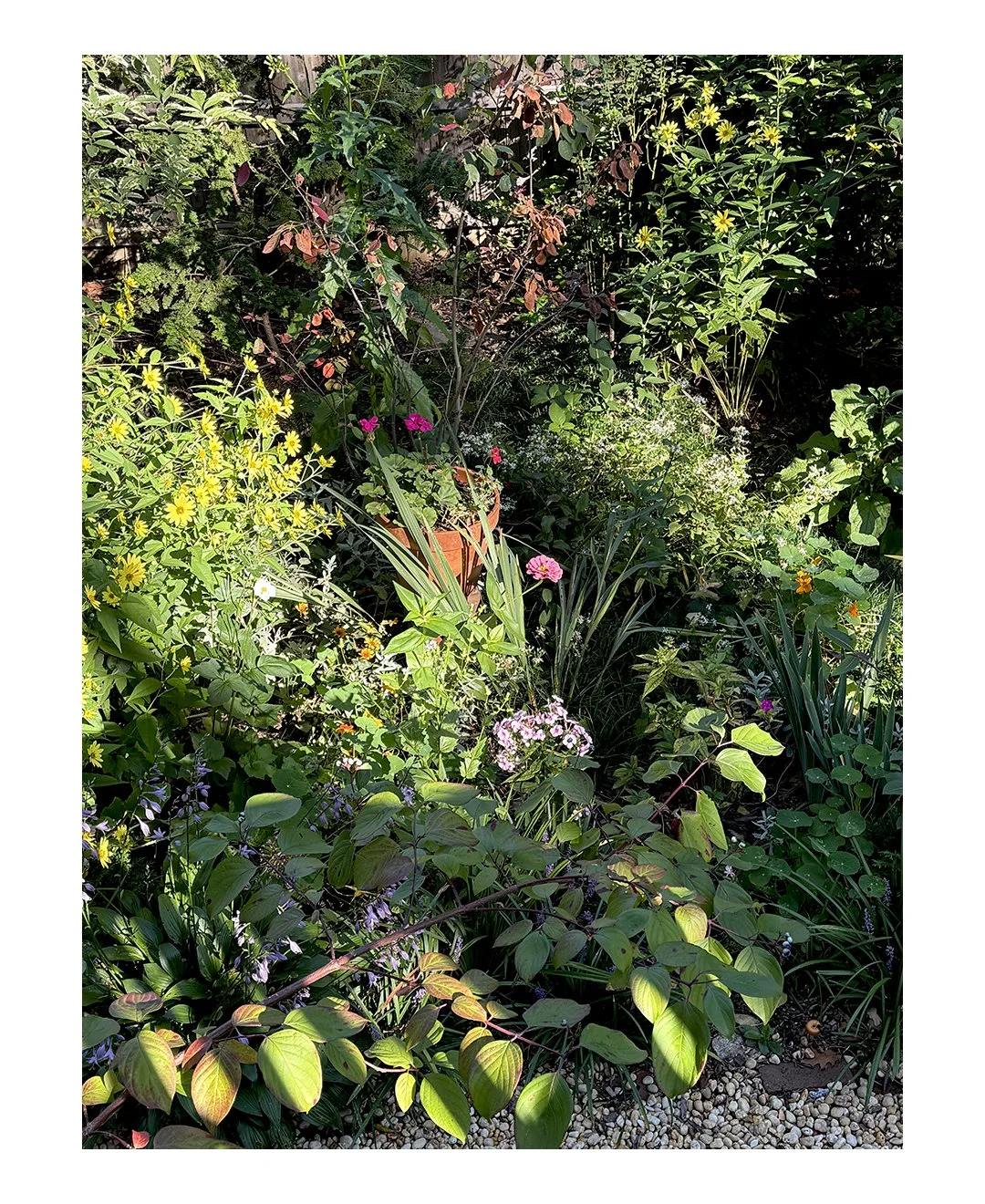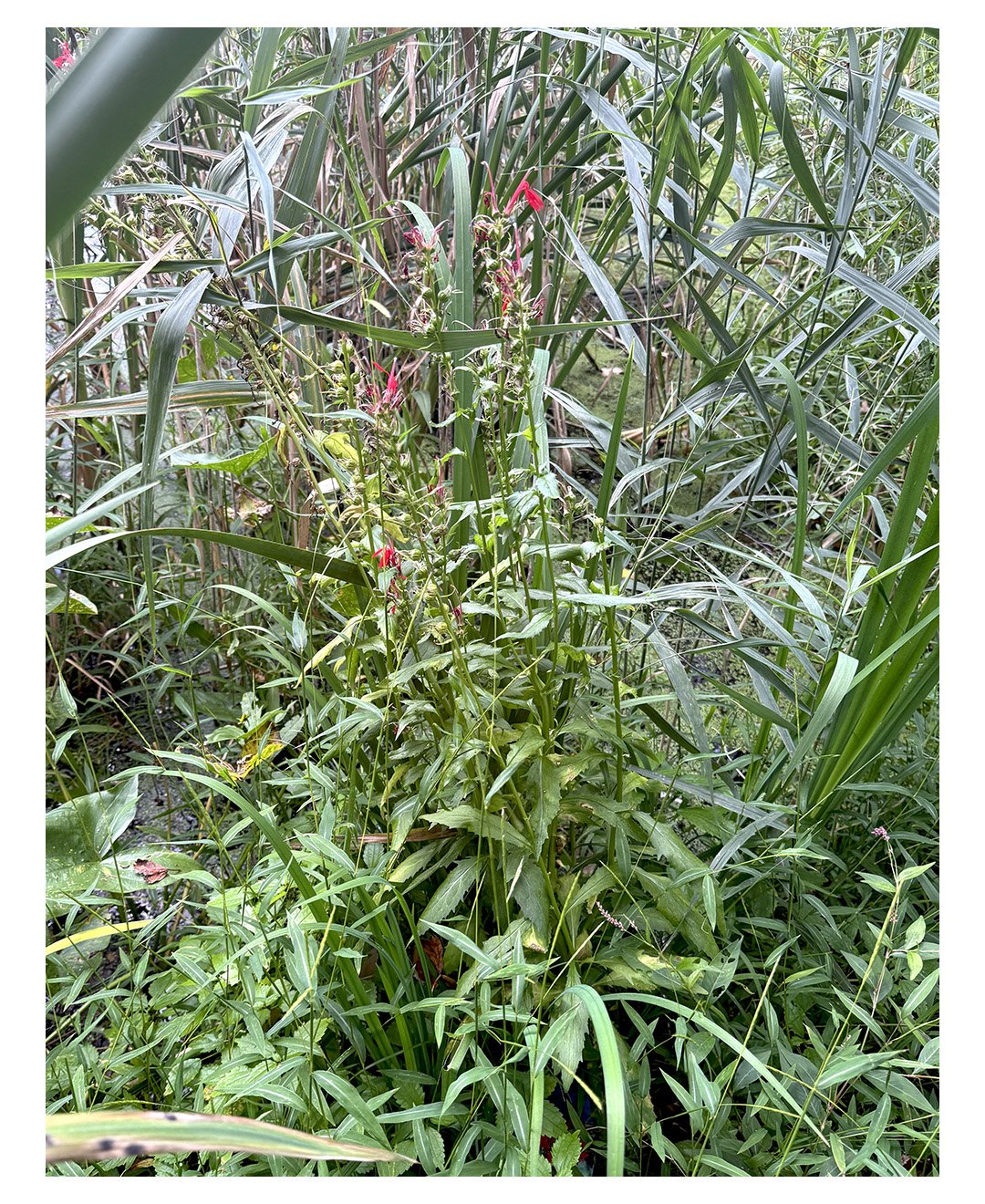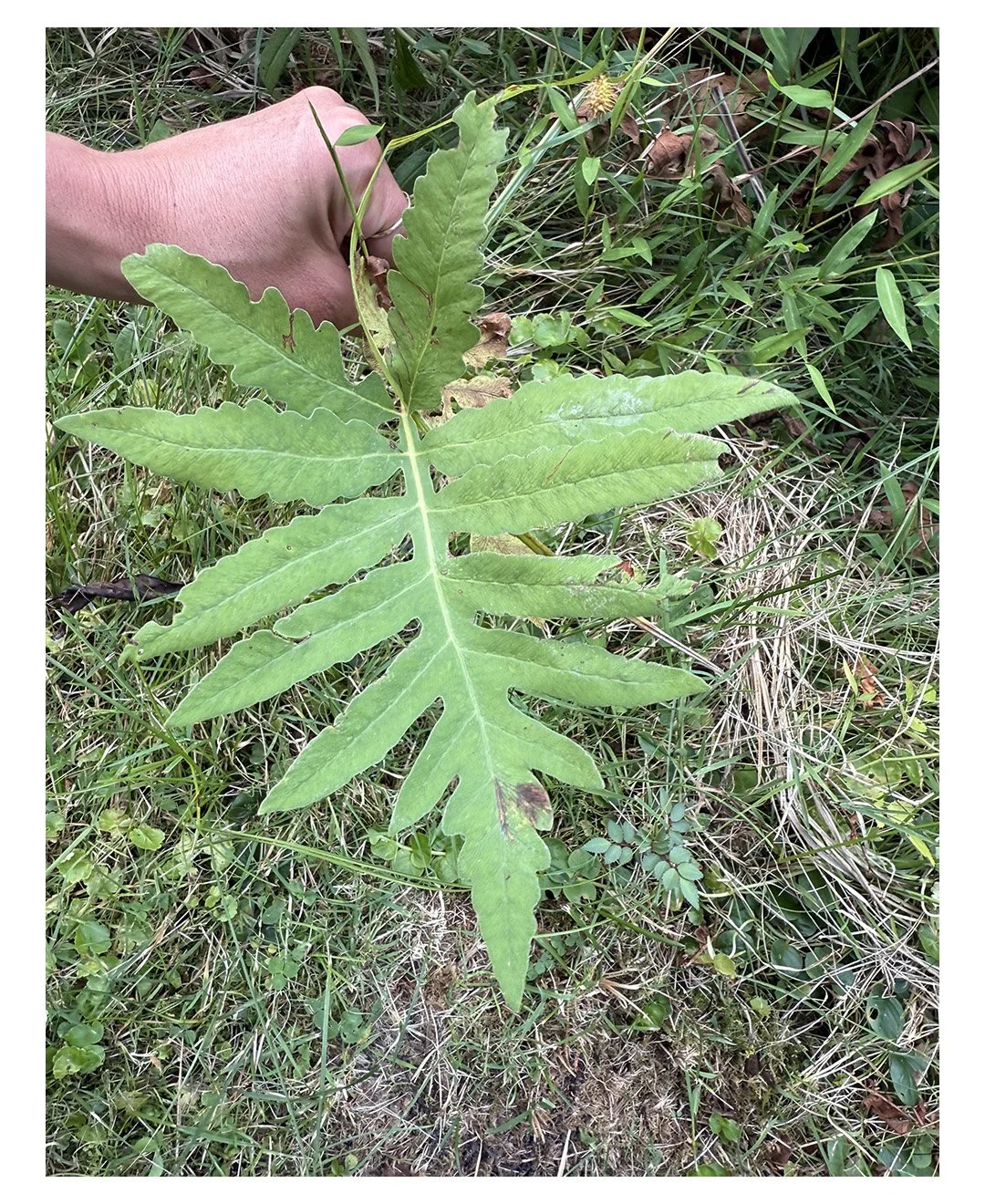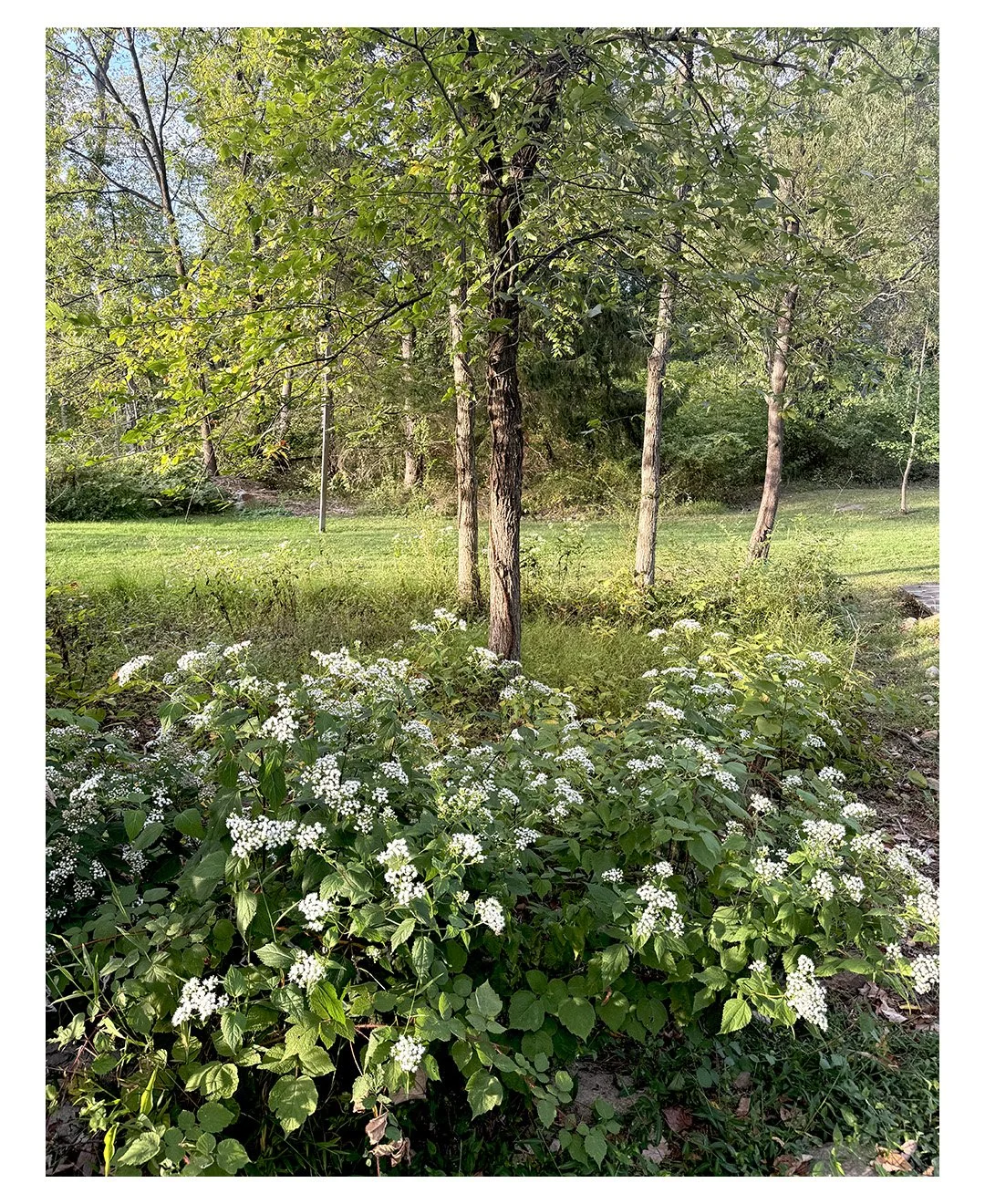Treasure At Our Pond
Knowing what to protect and nurture vs what may endanger an ecosystem means that identifying plants is step one in restoring health to a site. This is also, and maybe especially true for our own yards. Over 80% of land in New Jersey is privately owned. We’re all we’ve got.
Native species pictured in this backyard garden: Phlox paniculata, Cornus amomum (silky dogwood), Helianthus divaricatus (Woodland Sunflower), Amelanchier canadensis (Canadian Serviceberry), Eurybia divaricata (White Wood Aster), Sambucus canadensis, (American Black Elderberry), Viburnum dentatum (Arrowwood Viburnum)
Plant identification* (I like the Picture This app; it always prompts you to subscribe to the paid version, but I’ve been using the free version for years) is also crucial for teaching ourselves about the beauty of certain plants that may, at one time, have been labeled as weeds and, on the other hand, plants we may have once admired, we must recognize as dangerous (or here).
Looking around at how far we have to go to restore health to our natural areas can feel daunting. I wanted to share all the signs of hope in the vibrant cooperative species currently living at the pond. Below are some beautiful native species I encountered on my walk yesterday.
Solidago canadensis (Canada Goldenrod)
Sagittaria latifolia (Broadleaf arrowhead)
Bidens cernua (Bur Marigold)
Lobelia cardinalis (cardinal flower)
Eutrochium purpureum (Joe-Pye Weed)
Onoclea sensibilis (sensitive fern)
Ageratina altissima (White Snakeroot)
*Why Do We Prefer Scientific Names?
Scientific or botanical names eliminate confusion that can be found when using common names.
The best reason for not using common names when referring to plants is that they are often more confusing than the botanical name.
The Same Plant Can Have More Than One Common Name
Common names can vary by location and are in the speaker's native language. This means that the same plant may have more than one common name. For example, the linden tree (Tilia) is also known as basswood, lime tree, and bee tree.
One Common Name Can Refer to More than One Plant
There are also several common names that are used for more than one species of plant. The common name, lime tree, can be used to describe the citrus fruit tree (Citrus limetta) or the shade tree (Tilia cordata) - two very different plants.
Scientific names are used in all parts of the world, regardless of the native language.
Scientific Name Elminates Confusion
With all this variation in common names, using a universal binomial naming system eliminates any confusion. The scientific name applies to only one species and is used in all parts of the world regardless of the language spoken.









